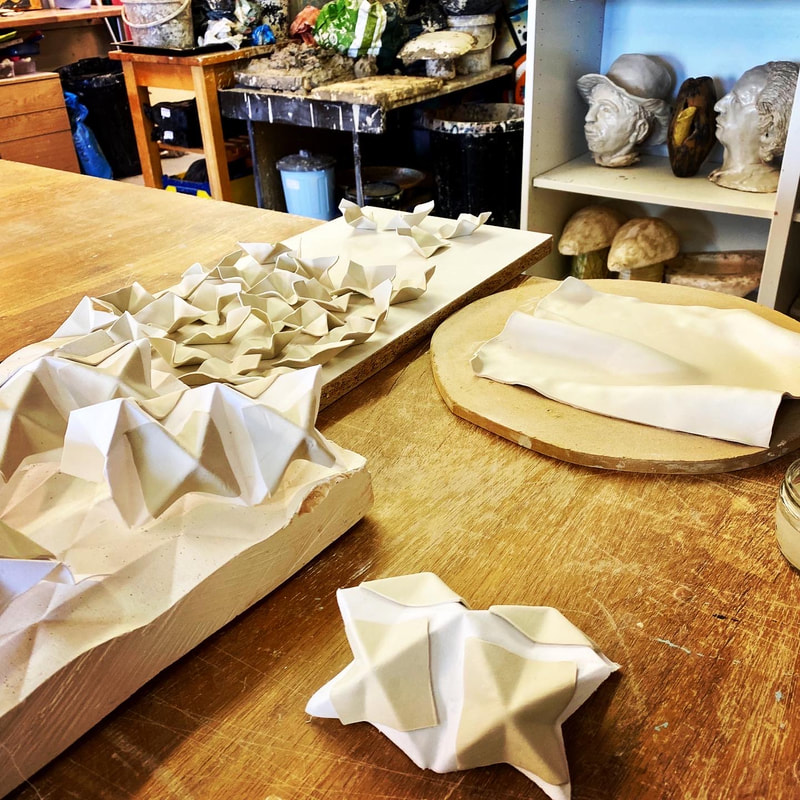My Process
Worked as fine as possible, porcelain is press moulded onto an origami surface to create texture, crisp edges, surface movement, light and shadow.
Colour is added to raw porcelain, then the surface and edge is rippled with origami folds to create very differing effects. Work is unglazed and fired to 1250℃.
Colour is added to raw porcelain, then the surface and edge is rippled with origami folds to create very differing effects. Work is unglazed and fired to 1250℃.
Colour
I work glaze stain into the porcelain to achieve the depth and density of colour I'm after. It is important to me that, like paper, the colour in integral to the porcelain. The colour is folded as well as the porcelain.
Image 2 and 3 show the difference between the porcelain colour before and after firing.
Image 2 and 3 show the difference between the porcelain colour before and after firing.
|
|
Adding Pure Colour
Like an alchemist searching for gold, the glaze stain colour has to be added accurately, and in proportion to the quantity of porcelain, to get the required depth of colour. It takes time and patience to mix the colour into the porcelain until it's evenly blended through, ensuring no air is added. |
|
|
|
|
















